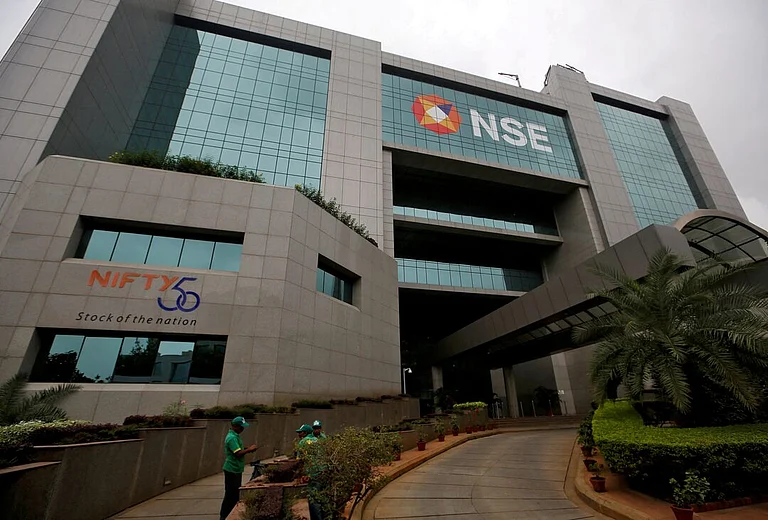Fast Moving Consumer Goods (FMCG) stocks are back in action! The Nifty FMCG index has recovered over 15 per cent from its 52-week low, hit in early March, 2025, significantly outperforming the benchmark Nifty 50 index, which surged nearly 10 per cent during the same time period. The Nifty FMCG index tracks the performance of 15 major stocks from the sector.
The index had touched its record high of 66,438.70 on September 27, 2024. From this level, it has been on a constant correction mode, falling to its 52-week low of 50,199.35 level on March 4, a fall of 24.45 per cent. However, it recovered nearly half of its losses during its eight-straight-week rally.
Recently, Hindustan Unilever (HUL), Nestle India and Tata Consumer Products reported their Q4 results and the market is factoring that as well. On April 24, the FMCG index traded lower by around 1 per cent, dragged by heavyweight HUL, which slipped up to 4 per cent in today's trade.
FIIs Increase Stakes in FMCG Sector
Foreign Institutional Investors (FIIs) have bought FMCG shares worth Rs 587 crore during the April 1-April 15 fortnight, data from National Securities Depository Ltd (NSDL) showed. Before this, they have been net sellers in the sector for the past eight consecutive fortnights or four consecutive months.
During this four-month period, FIIs cumulatively offloaded Rs 20,714 crore from FMCG stocks. Their asset under custody (AUC) in the sector, as of November 30, was Rs 4.22 lakh crore. As of April 15, this figure stood at 3.84 lakh crore.
Vaibhav Global Leads Recovery Rally, Dabur Drags
Over the past eight week period, since the time FMCG index started its revival, soft drink brand Pepsi-bottler Vaibhav Global rose 26.06 per cent, leading the rally.
Following it, Godrej Consumer Products gained 22.73 per cent, United Spirits – 21.45 per cent, Emami – 21.24 per cent, Radico Khaitan – 21.22 per cent, Britannia – 18.68 per cent, Marico – 18.20 per cent, Tata Consumer Products – 18.10 per cent, United Breweries – 14.67 per cent, Patanjali Foods – 11.72 per cent, Nestle India – 10.04 per cent, Hindustan Unilever – 9.71 per cent, ITC – 9.58 per cent, and Colgate-Palmolive – 4.15 per cent.
The only drag for the index has been Dabur, which declined 1.68 per cent during the period.
What's Fuelling FMCG Stocks
Amit Agarwal, Senior Vice President – Fundamental Research, Kotak Securities, explained, "In FMCG, there is growing optimism for FY26, with expectation of normal monsoon, which is expected to positively impact consumption, along with the potential ¾nefits from tax cuts and government initiatives. We have also seen price hikes across various categories, including tea, coffee, soaps, toothpastes, edible/hair oils and household insecticides."
Manasvi Garg, Sebi-registered investment advisor, CFA, Founder and Chief Wealth Manager, Moneyvesta, told Outlook Money a few macroeconomic factors which are working in favor of the FMCG sector.
Here they are:
Shift In Demand Toward Domestic-Driven Sectors: This recovery reflects a shift in investor preference towards sectors driven by domestic demand and supported by favourable macroeconomic trends. He explained that the FMCG sector has lower dependence on exports and global demand, shielding it from geopolitical and trade-related disruptions.
Increasing Disposable Income: The Union Budget 2025 introduced personal income tax cuts aimed at increasing disposable income for urban households, Garg said, adding that this is expected to revive urban consumption which contributes to roughly half of FMCG volume and two-thirds of FMCG value.
Recovery In Rural Demand: Rural demand is recovering on the back of a strong Rabi harvest and another good monsoon season anticipated for FY25-26. This is further expected to increase rural consumption due to the wealth effect.
Easing Inflation: Retail inflation dropped from 6.2 per cent in October 2024 to 3.3 per cent in March 2025 — the lowest since August 2019. Easing inflation has improved consumer purchasing power.
Moderating Raw Material Prices And Improving Margins: On the margin front, there has been a moderation on a sequential basis in prices of key raw materials such as wheat, barley, corn, maize and crude for FMCG; the raw material prices are expected to be more benign in H2 FY26, albeit on a higher base of H2 FY25. However, concerns about the high prices of Palm Oil and Copra still persist.
Attractive Valuations: Current valuations also provide comfort as the sector is currently trading at 45 PE versus its five year median PE of ~42.
"Demand commentary, distribution network expansion, product innovation, trend in raw material prices remain key monitorable for the sector," Garg said.














